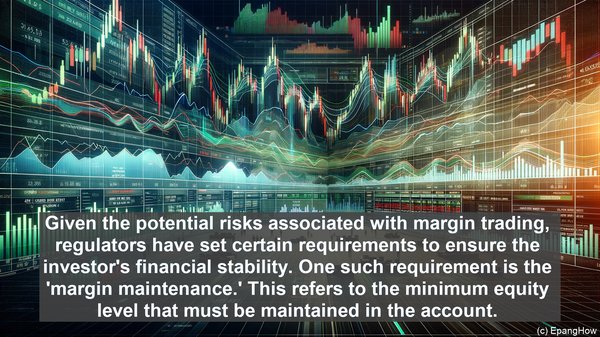Introduction: The Foundation of Stock Trading Accounts
Before we delve into the differences, let’s establish a basic understanding of stock trading accounts. These accounts serve as a platform for investors to buy, sell, and hold securities. While the primary goal is the same, the mechanisms and regulations governing margin and cash accounts vary significantly.

Cash Accounts: The Traditional Approach
A cash account is the most straightforward option. As the name suggests, it requires the investor to have sufficient funds in the account to execute trades. When you buy a stock, the entire purchase amount is deducted from your available cash balance. Similarly, when you sell, the proceeds are added to your cash balance. The key aspect here is that you can only trade with the money you have, making it a more conservative approach.

Margin Accounts: Amplifying Your Trading Potential
A margin account, on the other hand, offers a higher degree of flexibility. It allows you to borrow funds from your broker to make trades. This borrowed money, known as ‘margin,’ acts as leverage, amplifying your buying power. For example, if you have $10,000 in your margin account and the broker offers a 2:1 margin, you can potentially make trades worth $20,000. This feature makes margin accounts popular among active traders looking to capitalize on short-term opportunities.
Margin Interest: The Cost of Leverage
While margin accounts provide the advantage of increased buying power, they come with an additional cost: margin interest. Just like any loan, the borrowed funds in a margin account accrue interest. The rate varies across brokers and is typically tied to the prevailing market rates. It’s crucial to factor in this cost when considering margin trading, as it can eat into your profits if not managed effectively.
Regulatory Requirements: The Margin Maintenance
Given the potential risks associated with margin trading, regulators have set certain requirements to ensure the investor’s financial stability. One such requirement is the ‘margin maintenance.’ This refers to the minimum equity level that must be maintained in the account. If the account’s equity falls below this threshold, a ‘margin call’ is triggered, requiring the investor to either deposit additional funds or liquidate positions to meet the requirement. This mechanism acts as a safeguard, preventing excessive losses and maintaining the overall stability of the market.
Short Selling: A Margin Account Exclusive
Short selling, a strategy where an investor bets on a stock’s decline, is another area where margin accounts have an edge. In a cash account, you can only sell a stock if you own it. But in a margin account, you can ‘borrow’ shares from your broker, sell them in the market, and later buy them back at a potentially lower price. This flexibility to profit from both rising and falling markets is a significant advantage for margin account holders.
Risk Considerations: The Margin Call Dilemma
While margin accounts offer lucrative opportunities, they also come with inherent risks. One of the primary concerns is the margin call. As mentioned earlier, if the account’s equity falls below the maintenance requirement, a margin call is triggered. If the investor fails to meet the call, the broker can liquidate positions, potentially resulting in significant losses. This risk underscores the importance of thorough risk management and a sound understanding of the market dynamics.
